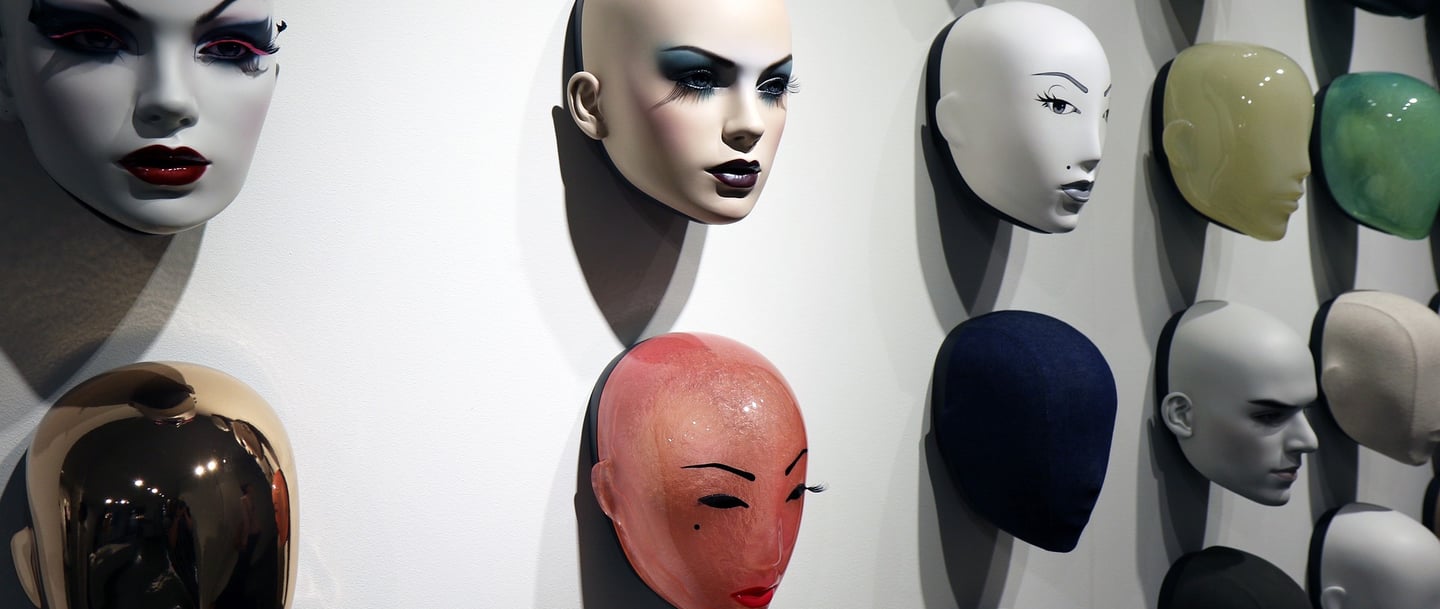How to Find Your Art Style
Unleashing Your Creative Identity
Syahid Zain
4/15/20239 min read


How to Find Your Art Style: Unleashing Your Creative Identity
Art is a deeply personal form of expression, and every artist has their own unique style that sets them apart from others. Finding your art style is an exciting and fulfilling journey that requires self-awareness, experimentation, and introspection. It's not a destination, but rather a continuous process of self-discovery and artistic growth.
In this blog post, we will explore some practical tips on how to find your art style and unlock your creative identity, also some potential pros and cons for you to consider.
Reflect on Your Artistic Influences
Reflecting on your artistic influences is an essential step in finding your art style. As an artist, you are constantly inspired by the work of others, whether it's a favorite artist, art movement, or even everyday objects. Take time to introspect and identify the artists, artworks, and styles that have resonated with you and have had an impact on your creative vision. Consider what draws you to their work, whether it's their use of color, composition, or subject matter, and how it has influenced your own artistic preferences. Reflecting on your artistic influences can provide valuable insights into your own artistic style and help you identify the elements that truly resonate with your creative identity.
However, it's important to strike a balance between being influenced by others and developing your own unique artistic voice. Avoid simply copying or imitating other artists' work, as it may hinder your ability to find your own style. Instead, use your influences as a starting point to explore and experiment with different techniques and ideas that align with your own creative vision. Consider how you can incorporate the elements that inspire you into your own work in a way that feels authentic and true to your artistic voice. Reflecting on your artistic influences should serve as a guide for your own artistic exploration, rather than a limitation.
Reflecting on your artistic influences is not about copying others, but about understanding yourself as an artist. It's an opportunity to deeply explore your artistic preferences, your creative inspirations, and your own unique perspective on the world. By reflecting on your artistic influences, you can gain a deeper understanding of your own artistic voice and develop a style that is uniquely yours. It's a continuous process that evolves over time as you grow and evolve as an artist, and it's an essential step in finding your own artistic style. Embrace your influences, but also embrace your own creative individuality, and use it as a driving force in your art.
Experiment with Different Mediums and Techniques
Experimenting with different mediums and techniques is a crucial step in finding your art style. By trying out various art supplies, such as acrylics, watercolors, oils, charcoal, or digital media, you can discover which mediums resonate with you the most. Play around with different brush strokes, textures, and mark-making techniques to see what feels natural and enjoyable to you. The process of experimentation can also help you develop your technical skills and artistic versatility, allowing you to create unique and distinct artwork that reflects your artistic vision.
Furthermore, exploring different mediums and techniques can provide you with a sense of freedom and playfulness in your art. It allows you to push the boundaries of your comfort zone and try new things, which can lead to exciting discoveries and unexpected results. Embrace the joy of experimentation and see it as an opportunity to uncover new ways of expressing yourself through your artwork.
In addition, experimenting with different mediums and techniques can help you find your preferred artistic language. It's like learning a new language - the more you try, the more you understand your own artistic voice. By trying different mediums and techniques, you may discover a unique combination that resonates with your artistic vision and becomes an integral part of your art style. Remember, finding your art style is a continuous process, and experimenting with different mediums and techniques can be a vital part of your artistic growth and self-discovery.
To summarize, experimenting with different mediums and techniques is a crucial step in finding your art style. It allows you to discover what resonates with you, develop your technical skills, and push the boundaries of your comfort zone. Embrace the joy of experimentation, keep an open mind, and see it as an opportunity to uncover your unique artistic voice. Your journey to finding your art style is a personal and exciting adventure, and experimenting with different mediums and techniques can be a valuable part of that journey.
Embrace Your Unique Perspective
Your perspective, experiences, and personality are what make your art style unique. Embracing your individuality and using it as a driving force in your art is essential to finding your art style. Reflect on your personal experiences, memories, emotions, and beliefs, and consider how they can be translated into your artwork.
When you embrace your unique perspective, you tap into your authenticity as an artist. Your art should reflect your voice and your perspective on the world around you. Avoid trying to conform to certain artistic trends or styles, and instead focus on developing your own artistic voice. Embrace your quirks, your passions, and your vision, and let them guide your creative process.
Taking risks in your art and expressing yourself authentically can be scary, but it's a crucial step in finding your art style. Don't be afraid to experiment, make mistakes, and learn from them. Your unique perspective is what will set your art apart and make it truly distinctive. Embrace it fully and allow it to shine through in your artwork.
Embracing your unique perspective also means being true to yourself as an artist. Avoid comparing yourself to others or seeking validation from external sources. Stay true to your artistic vision, even if it doesn't conform to popular opinions or expectations. Trust your intuition and follow your own artistic path. Embracing your unique perspective is a continuous process that requires self-awareness, self-acceptance, and self-expression. It may take time, but staying true to yourself as an artist will ultimately lead you to your own authentic art style. Embrace your uniqueness and let it be the driving force in your artistic journey.
Experiment with Different Subject Matters
By exploring a wide range of subjects, you can discover the themes and concepts that truly resonate with you. Try pushing the boundaries of your comfort zone and challenge yourself creatively by experimenting with landscapes, portraits, still lifes, abstract concepts, and more. Pay attention to the subjects that evoke emotions in you or spark your curiosity, and consider how you can incorporate your unique perspective into different subject matters.
Keeping a sketchbook is an invaluable tool for artists. It's a place where you can freely doodle, sketch, and experiment without any pressure or expectation. Use your sketchbook as a creative playground to explore different ideas, styles, and techniques. Allow yourself to make mistakes and learn from them. Doodling freely in your sketchbook can help you tap into your subconscious mind and unlock your creativity. It's a space where you can let your imagination run wild and explore different possibilities without any limitations. Your sketchbook can be a treasure trove of inspiration and a way to document your artistic journey.
Experimenting with different subject matters can also help you broaden your artistic skills and versatility. As you explore different subjects, you may discover new techniques, approaches, and ways of representing different themes. This can expand your artistic toolbox and allow you to develop your own unique artistic style by combining different elements that resonate with you. Embrace the process of experimentation and be open to trying new things in your art. Remember that finding your art style is a continuous journey, and it's okay to evolve and refine your style over time as you continue to explore different subject matters and grow as an artist.
In conclusion, experimenting with different subject matters is a crucial part of finding your art style. It allows you to explore a wide range of themes, push the boundaries of your comfort zone, and broaden your artistic skills. Keep a sketchbook to freely doodle and sketch without any pressure, and use it as a space to document your artistic journey. Embrace the process of experimentation and be open to trying new things. Remember that finding your art style is a personal and evolving journey, so embrace your unique perspective and let your creativity shine.
Keep a Sketchbook and Doodle Freely
Doodling freely in your sketchbook is a powerful way to ignite your imagination and discover your art style. It's a space where you can let your ideas flow without any constraints, giving you the freedom to explore new possibilities. You can experiment with different mark-making techniques, textures, and compositions, and let your instincts guide your creative process. Doodling also helps you develop your artistic instincts and gain confidence in your artistic abilities. It's a process of self-discovery that allows you to uncover what truly resonates with you and aligns with your artistic vision.
In addition to the artistic benefits, keeping a sketchbook and doodling freely also fosters a sense of discipline and consistency in your artistic practice. It encourages you to make art a part of your daily routine and develop a habit of creative exploration. It also serves as a visual record of your artistic progress and growth over time, showing you how far you've come and inspiring you to keep pushing the boundaries of your art style. Your sketchbook becomes a personal artistic journal that reflects your artistic journey and helps you refine and hone your unique artistic voice.
Keeping a sketchbook and doodling freely is a powerful tool for artists to find their art style. It provides a space for creative exploration, self-discovery, and artistic growth. By allowing yourself to freely express your ideas, experiment with different techniques, and tap into your unique perspective, you can uncover your artistic voice and develop your own distinctive art style. So, grab a sketchbook and start doodling, and let your imagination soar as you embark on the exciting journey of finding your art style.
While having an art style can be beneficial in many ways, there are also some potential pros and cons to consider. Let's explore them in more detail:
Pros of having an art style:
Unique artistic voice: Developing a distinct art style can help you establish your own artistic voice, setting you apart from other artists and making your work recognizable. It allows you to convey your unique perspective, emotions, and ideas in a consistent and cohesive manner, which can help you create a personal brand and stand out in a competitive art market.
Cohesive body of work: Having an art style can create a sense of cohesion and unity in your body of work. It can tie together different pieces of art, even across different mediums or subjects, creating a visual consistency that makes your portfolio or gallery cohesive and visually appealing. This can enhance your artistic identity and make your work more memorable to viewers and collectors.
Mastery and expertise: Focusing on a specific art style allows you to hone your skills and expertise in that particular style, leading to mastery over time. As you consistently practice and refine your techniques in your chosen art style, you can become proficient and excel in that style, showcasing your technical abilities and artistic craftsmanship.
Cons of having an art style:
Limitations and stagnation: Embracing a specific art style may limit your artistic exploration and experimentation. If you become too attached to a particular style, you may find it challenging to break away from it or explore new artistic territories. This can potentially lead to stagnation and hinder your artistic growth, as you may feel confined to a particular style and unable to evolve or try new things.
Market demand and trends: Art styles, like any other creative medium, are subject to market demand and trends. If your chosen art style falls out of favor or loses popularity, it may impact your marketability and commercial success. It's important to be aware of the market dynamics and trends, and not solely rely on a single art style, as it may change over time.
Artistic identity and authenticity: While having an art style can give you a recognizable artistic identity, it can also raise questions about authenticity and originality. Some may argue that adhering to a specific art style may limit your ability to express your true self or explore diverse artistic influences. It's important to strike a balance between having an art style and staying true to your own artistic voice, ensuring that your work reflects your unique personality, emotions, and ideas.
In conclusion, having an art style has its pros and cons. It can provide a unique artistic voice, create a cohesive body of work, and showcase your mastery in a particular style. However, it may also impose limitations, be subject to market demand and trends, and raise questions about authenticity. It's important to strike a balance between developing an art style and maintaining artistic flexibility and authenticity, allowing yourself to evolve and grow as an artist while staying true to your unique artistic vision.
So, what do you think? Should you have an art-style?
Image: Caroline Hummels from Pixabay


©2023 SYAHID ZAIN ILLUSTRATION. All Rights Reserved. DO NOT USE WITHOUT PERMISSION | Contact syahid.nurzain@gmail.com | Privacy Policy
